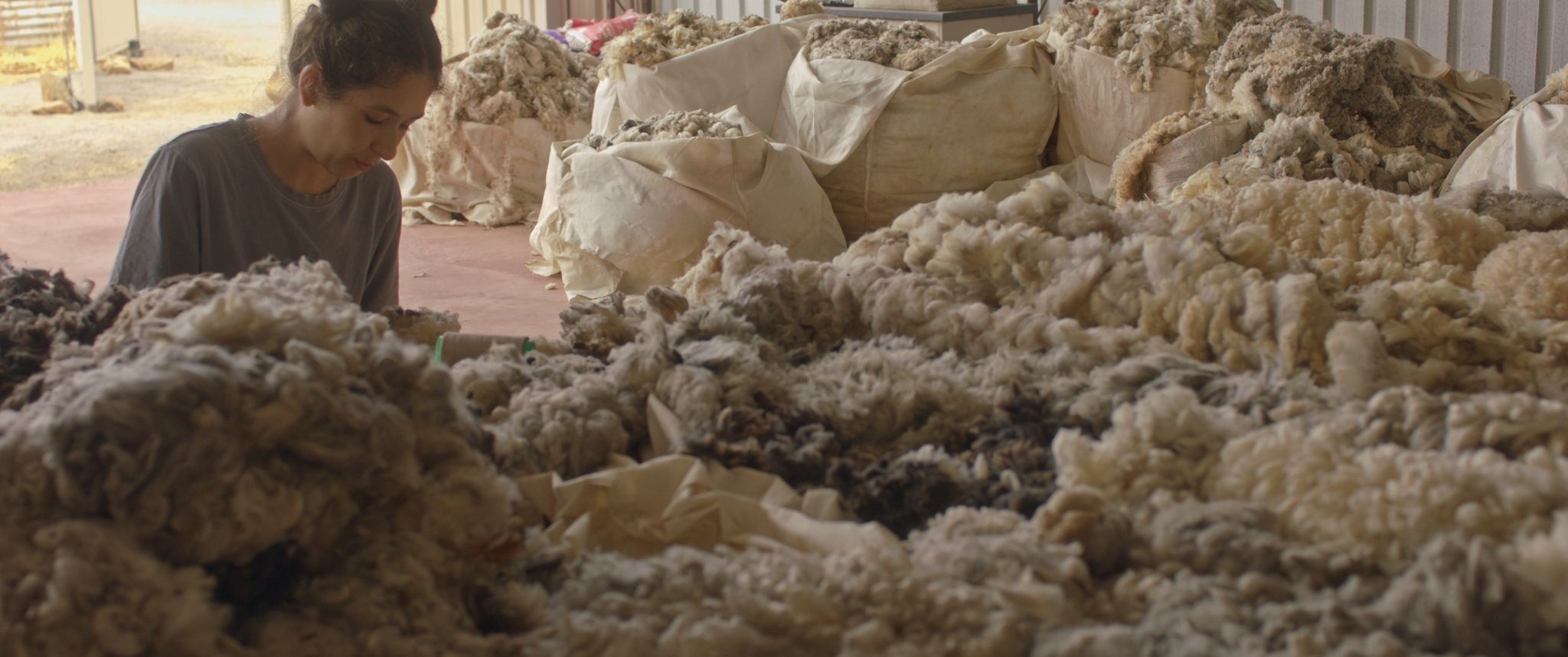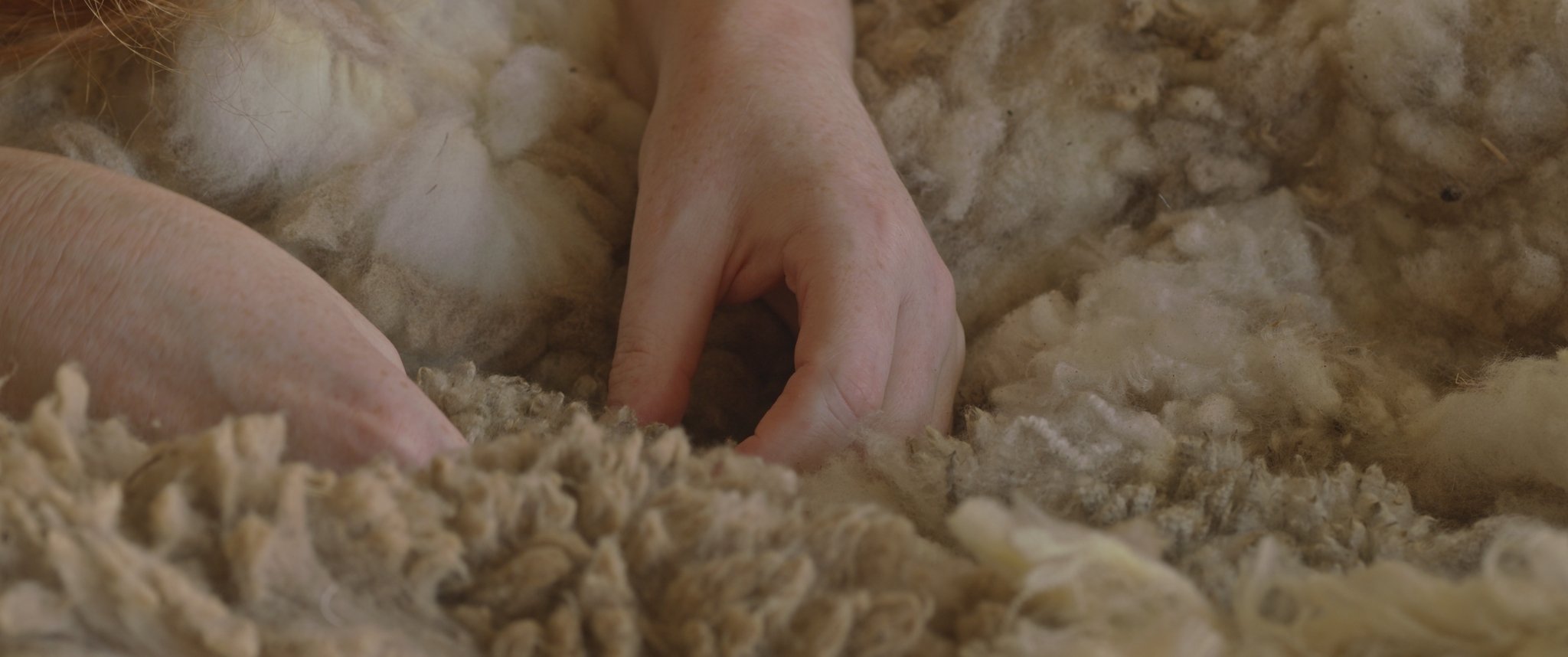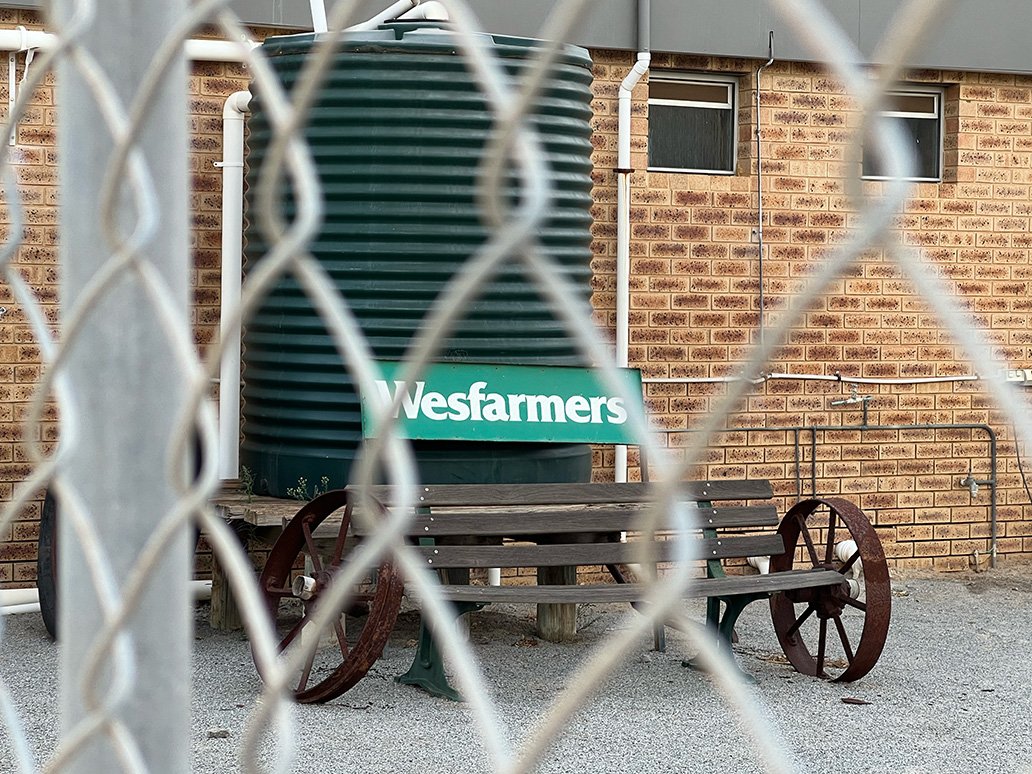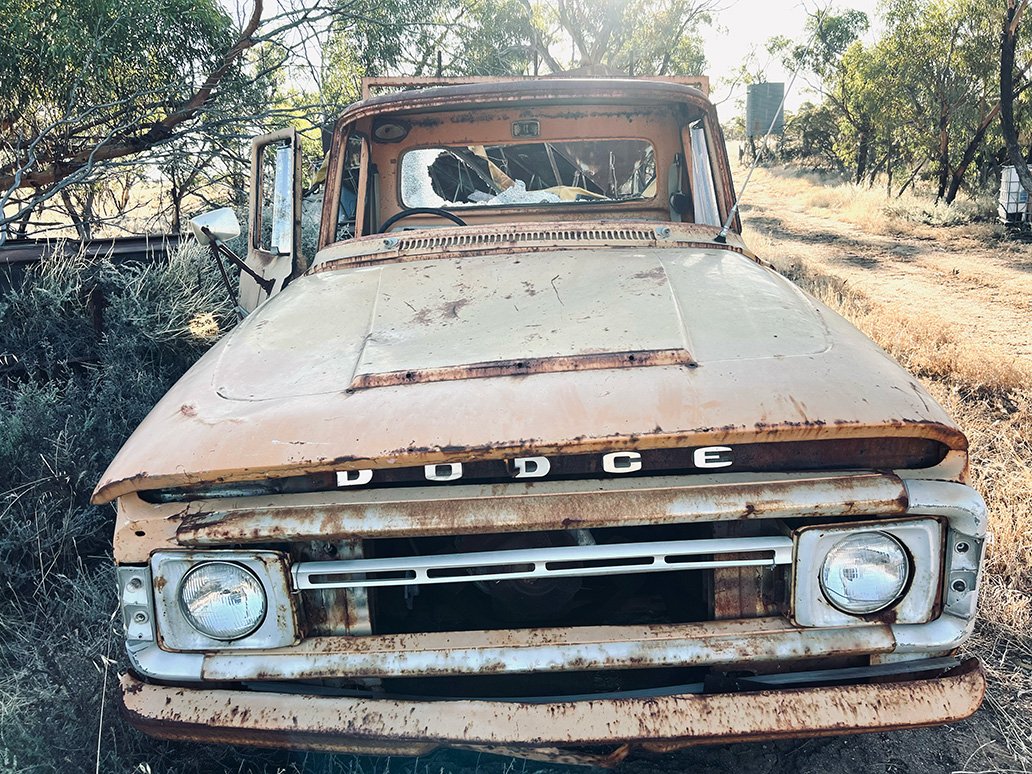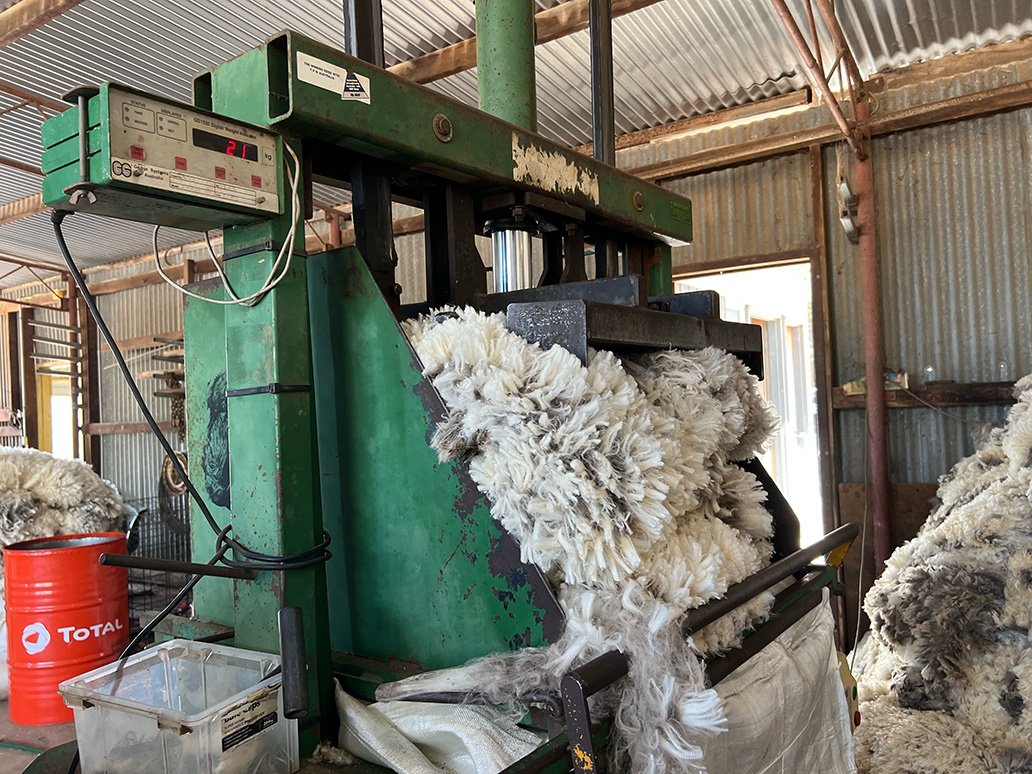Rural Utopias Residency: Tina Stefanou in Carnamah #6
Tina Stefanou is currently working with the community of Carnamah. This residency forms part of one of Spaced’s current programs, Rural Utopias.
Tina Stefanou is an Australian-Greek artist based on Wurundjeri country in Wattle Glen, Victoria. With a background as a vocalist, she works undisciplined, with and across a diverse range of mediums, practices, approaches and labours: an embodied practice that she calls voice in the expanded field. Informed by diasporic experiences, Stefanou engages in sound as social practice and explores with and beyond the all-too-human and more-than-human voice.
Here, Tina shares a final update from stage 2 of her residency…
AUDIO TRANSCRIPT
Mixed field notes from Amangu country, read from Crete, February 17 to March 30, 2023.
Back in Carnamah. Tired body. Grief gut. Neat streets after a searing hot day. Sweat builds, even under air-con bed. No performance here, just secretions.
Walking when the golden hours sings:
ping…dab…ba…summer seed, green shimmer purple…
a granular quiet, so much industry standing still.
The grain of this land intoxicating and laced with old hungry gods.
Out here in the face of mono crops, city CV inflation, agribusiness writing, and, reading begin to collapse[1]
*Silent silos
The relentless heat of a Western Australian summer insistently disrupts the writing of these field notes, provoking a question that smoulders at the back of my throat. My time here necessitates a peculiar merger, weaving my work with the cultural artefacts of the Art Gallery of Western Australia an imperative for the future exhibition.
But what can the treasure trove bring to the table? And how can the socialities of this place, transform the Art Gallery of Western Australia's State collection?
Inspired by Denise Ferreira da Silva's poet(h)ics, I propose a move away from typical constraints. Her approach urges us to liberate these encounters from the shackles of representation, and the legal and economic structures that rigidly maintain them. It contests the established practice of the Artist as a voice giver to: objects, locations, people, systems and beings, within a collection generating foreseeable or incidental, pastural or social connections.[2]
*A heavy ball drops on artificial lawn at Carnamah long balls club.
The agri aspect of agripoet(h)ics operates on dual levels. Firstly, it recognises the agricultural dimensions that shape our lives, codes, practices, and historicity, as well as the structural formations associated with value, statehood, globalisation and production. Secondly, it seeks to aggregate adjacently and agitate surreally those tendencies that govern selfhood across various realms of existence.
Commodities, like grain under this light, are not merely secondary products of social structures or methods of production, destined to be consumed or replaced by capital, instead, agripoet(h)ics reveals the inherent significance of relations in process, in motion, and “if tuned carefully, can become robust enough to grow and proliferate, proliferate through and beyond the institution.”[3]
Just as Roland Barthes famous, The Grain of the Voice[4], moves beyond discursive language — grain, identity, and wool represent aspects that exceed market relations, opening the space for the “revaluation of value.”[5]
This approach necessitates a deeper interrogation into “who produces institutions and articulates their subgroups,”[6] while also experimenting with alternate modes where thought and vocality can carry different differ differ differently.
*1000s of cockatoos mating at sunset
In the exchange this afternoon I bump into Gary. He's happy to see me. He was wondering when I was coming back, he takes me out to the back and introduces me to his son and their friend. They are painting with so much focus. She is painting the Seven Sisters and he is painting a green landscape.
Gary and I sit on the couch, and he unwraps, very carefully, his engraved emu eggs.
Darkest navy, with marking patterns, and ghostly faces.
You can feel their power. You can feel their power. You can feel their power, sucking you into its hollow yolk.
He tells me he showed a child this egg, and the child was frightened. He is now painting another egg with the image of his cousin, whom he dislikes greatly. Some kind of exercise in transference through the carving of enemies.
I respectfully declined to focus on the archive collection during my time in the Midwest, choosing instead to critically examine the conventional norms, often linked with social practice. These norms though often driven by good intentions, unwittingly bolster the growth of institutions, fuelled by efforts at doing good that are often hamstrung by their own limitations.
This aligns with Wheatbelt poet John Kinsella’s concept of the Vanity of Ethics.[7] Well intentioned endeavours that distil complex experiences into formulaic, survey-like presentations.
Such a process can inadvertently morph the artist into a mere missionary, or mediator, serving up tidy generalisations and distant viewpoints for a creative classed palette. Instead, the aim is to explore how the subtle nuances (the vocality and listening) of agripoet(h)ics can change how we engage with, understand, and contribute to the cultural commons.
This requires entering such dialogues without reinforcing self-presentation (being seen seeing) a position seemingly at odds with the principles of an artist in residence programme, particularly one that culminates in an exhibition at a major institution.
The challenge then, is to explore how an interspecies working-class vocality, can unsettle affirmatively, the bourgeois structures and tendencies of artistic production, irrespective of personal politics, while still benefiting from its prevailing regime.
It poses the question, how can artists engaged in socially engaged work navigate this terrain without succumbing to the very structures they seek to challenge?
*Hey, Google, play Beds are Burning.
During my time in the Midwest, I've been probing these questions non discursively through seemingly nonsensical vocal terrains during weekly workshops.
I call this a socially endangered practice which tends to the bodies within and without voice, a practice (and the relations that keep it alive) threatened by shifting societal environmental dynamics and over reliance on textual thinking, and the dominance of neoliberal priorities.
This entails the task of redefining the traditional role of the facilitator, and the assumptions on what the voice is. This re-definition involves shifting the focus from a fixed self, I know, and personal capture, my voice.
By doing so, the practice may open a field to more than human vocalities, while still tending to the all-too-human aspects of learning differently together. In this process, the parainstitutional (those structures and connections beyond or parallel to the institution) begin to sing.
This exploration is aided by Marcel and Paulina, two dedicated participants in their 60s and 70s, who consistently attend these workshops. Each week, a changing assembly of participants join us at the exchange, a communal space reminiscent of a barn, tucked away in a corner of a community centre. The structure of our group is as fluid as the vocalisations we explore, reflecting the changing nature of the workshops.
On one evening, we commence with an exploration of the space, allowing ourselves to wander and absorb the acoustic environment. We engage in humming, allowing the vibrations to reverberate through our bodies, establishing amorphous, and magically mundane connections with our vocal instruments.
Paulina beautifully describes this experience as an underwater parallel world, submerged beneath the surface of language, where vibrant activities unfold, and abruptly pause as we resurface, transitioning, transitioning, into different realms of existence.
The coalescence of vocal intensities and the evocation of sound as vision opens up a realm that is simultaneously creaturely and luminous, reminiscent of the intricate systems of light and sight found in deep sea formations surpassing the limitations of physical human eyes.
During our sessions, we delve into discussions on collectively building lung capacity, and vocal vitality. As we navigate the challenges of ageing amidst global meltdown. We recognise these vocal activities as raw materials emerging from our nervous system. Vocal technicities that weave a sonorous thread between individuals, societies and environments across multiple scales and places.[8]
*A child reads a manifesto in evangelical tongues.
I introduce the practice of singing straight tones…
Starting with myself, and then together, we hold notes, attempting to match each other's pitch, lung pace and grain, prolonging it for as long as possible. With each, attempt, Marcel’s notes grow stronger and longer.
Paulina and I also exchange, although Paulina faces challenges related to lung capacity, heightening her awareness of pneumonic endurance. We then venture into voice weaving, passing the end of the note to Paulina, who then passes it to Marcel, who then passes it to me. The weaving commences even before the note is fully released from the larynx, as the blend of resonance and closed eyes cultivates an infra (sonic) light in our fields of vision.
This thickening relationship achieved through our intertwined voice, allows us to experience light-voice a phenomenon emerging from our relentless vocal interaction and hyper focus on pacing, passing, and breath.
As the breath and note fade, the next person continues the voice weaving, amplifying its density by altering the pace. Eventually, we pass the weave back to me, and I demonstrate a double weave by slightly changing the pitch of the note halfway through someone else’s tone-breath, generating harmonics in the mesh, a wobble.
We experiment with different directions, passing the weave back to its originator or engaging in simultaneous weaves. It becomes a deeply visceral experience, with Paulina perceiving and feeling the interplay of light and sound—the original projection technology formed through voice-s(pace)-time.
*Roundup spraying tractor.
Having found new techniques for vocal re-formations, a question arises: how can we create the conditions for more people to engage in this type of vocal re-pacing, as an outsider seeking to emancipate the voice, from the voice of fame-making, the cliche of collective singing, and the genesis of the individual, this can be a challenging endeavour. This can be a challenging endeavour.
Particularly in the realm of singing, where many individuals dismissively claim, “ugh, you don't want to hear me sing”.
Shifting this perspective requires dedicated efforts and a non-discursive approach to social engagement in arthood, like: pub rants, feeding rescued kangaroos, toning in paddocks, long drives, supermarket sermons, radio listening, two-minute noodles, cafe bumpkins, sewing, tractor rides, chats with Gary, and sweat.
The workshops are only a sliver in the prehensive shapes that will inform the filmic trace event to come, which is also only a sliver in a broader explosion of real, lived and therefore magical, unnameable, uncollectable effects. Through an interspecies working-class vocality, that remains undisciplined, (plural) and parafamilial, in its (actioning of) poet(h)ics there is a chance to aggregate adjacently from “the grind of signification relinquishing separability determinacy and sequentially.”[9]
In the coming weeks, we'll start to aggregate in adjacent spaces, expanding our voice-vision into wool and grain. A place where the surreal lives in the crutches of workers and sheep. We will immerse ourselves in an event-based practice where we'll sew, sing, eat and converse in the large shed behind Andrew and David's house, which serves as an open studio program.
Together with any passers-by who join us, we will work to soften the edges of agribusiness utilising hands, lanolin, thread, canola, movement and vocality. Bringing together the gendered and class divisions of labour: the craft women will offer their expertise of sewing, and the farmers will share about machinery.
How this process brings back to life the inanimate silos of collection, and acquisition, is another story for another time.
I can hear the bleating of agridoxes, the harmonics of roundup, the milling of distant factories, and the profound understanding that no artwork is more absurd than agri-business.
[1] The term agribusiness writing is coined by Michael Taussig in his book, The Corn Wolf, (United Kingdom: University of Chicago Press, 2015.)
[2] More on poet(h)ics here: Denise Ferreira da Silva, "In the Raw," e-flux Journal, Issue #93, Published September, 2018. https://www.e-flux.com/journal/93/215795/in-the-raw/
[3] Felix Guattari via Erin Manning in For a Pragmatics of the Useless, Durham: Duke University Press, 2020, 151.
[4] Roland Barthes, "The Grain of the Voice," in Image-Music-Text (New York: Hill and Wang, 1977).
[5] Manning in For a Pragmatics of the Useless, 306
[6] ibid
[7] John Kinsella, "Displaced: A Rural Life" (Melbourne: Transit Lounge Publishing, 2021).
[8] See Michael Taussig, The Nervous System (Chicago: University of Chicago Press, 1992).
[9] Denise Ferreira da Silva, “In the Raw”
Images from top: Images [1-2] by Wil Normyle, 2023. Courtesy Tina Stefanou.
Images [3-7] courtesy Tina Stefanou, 2023.

